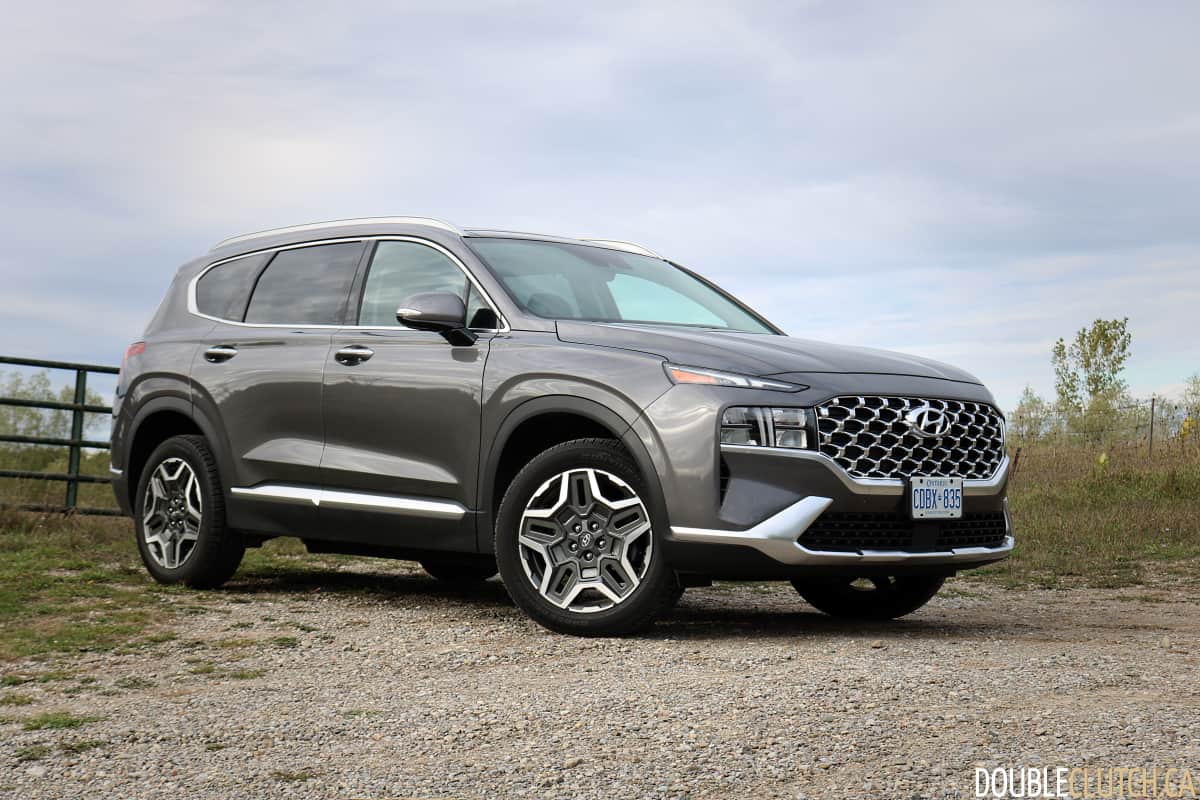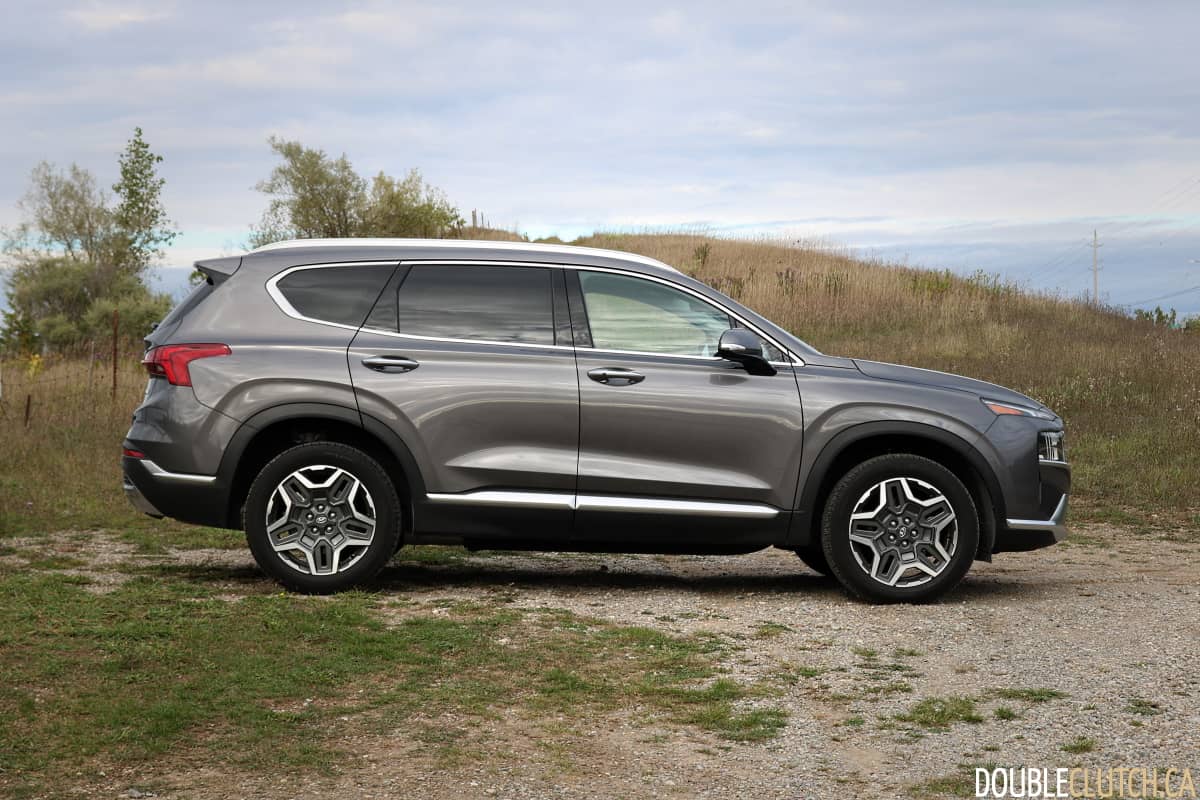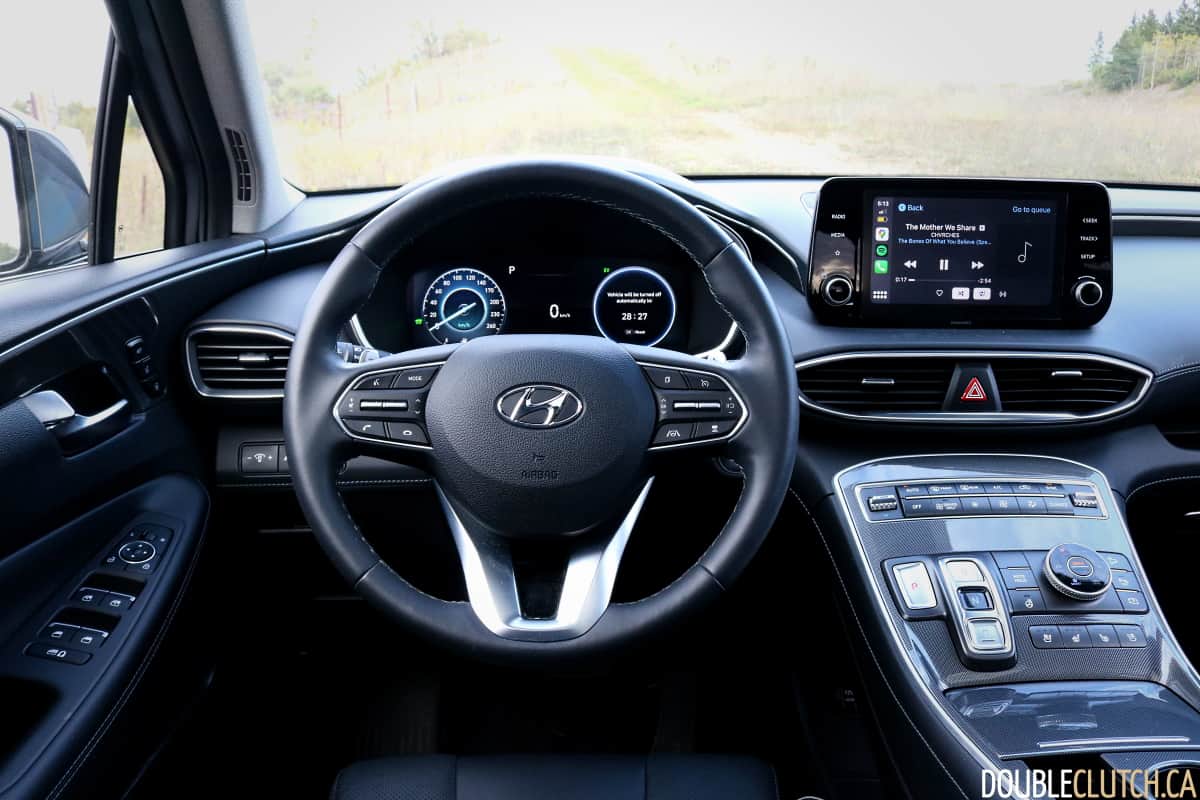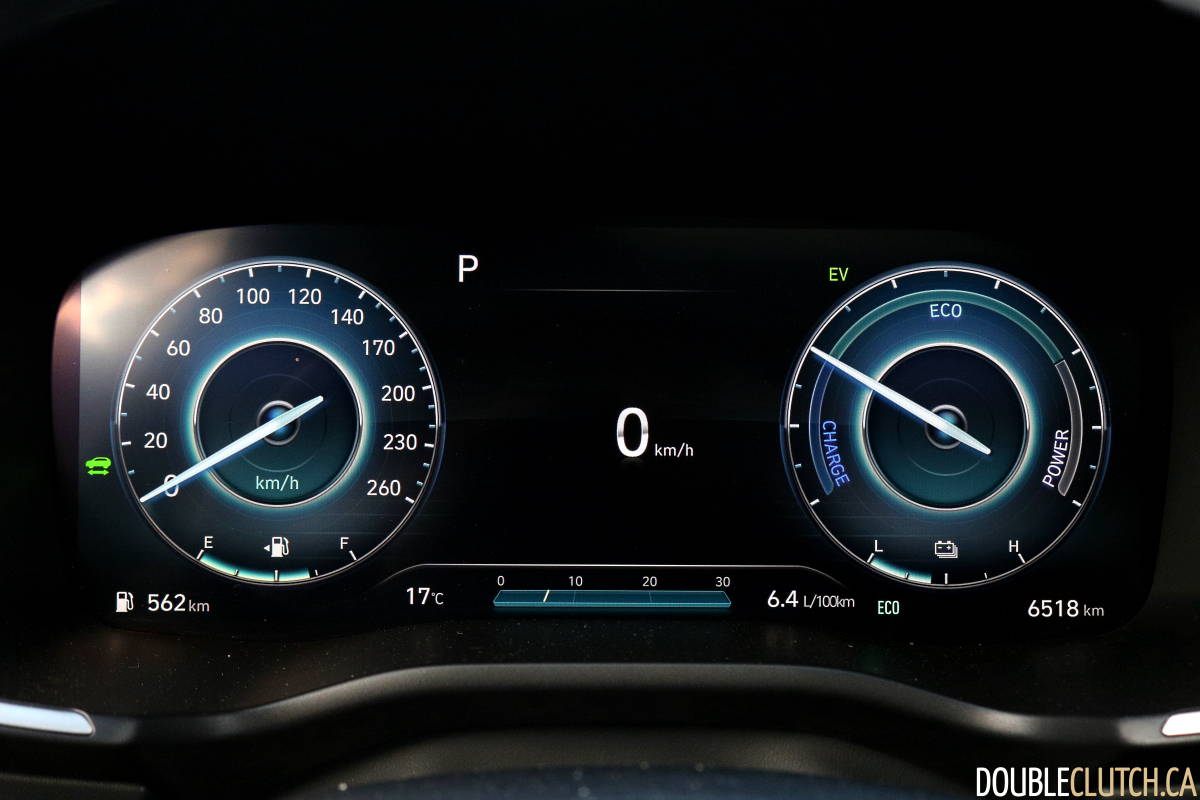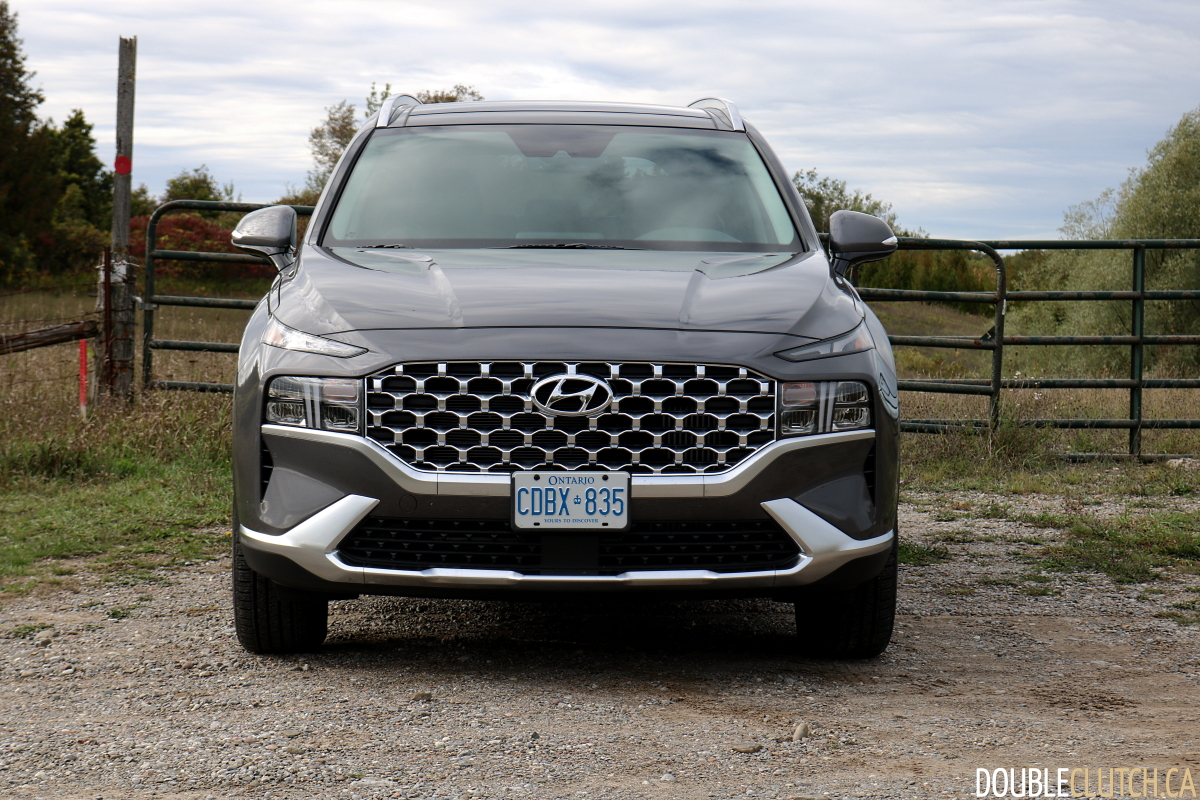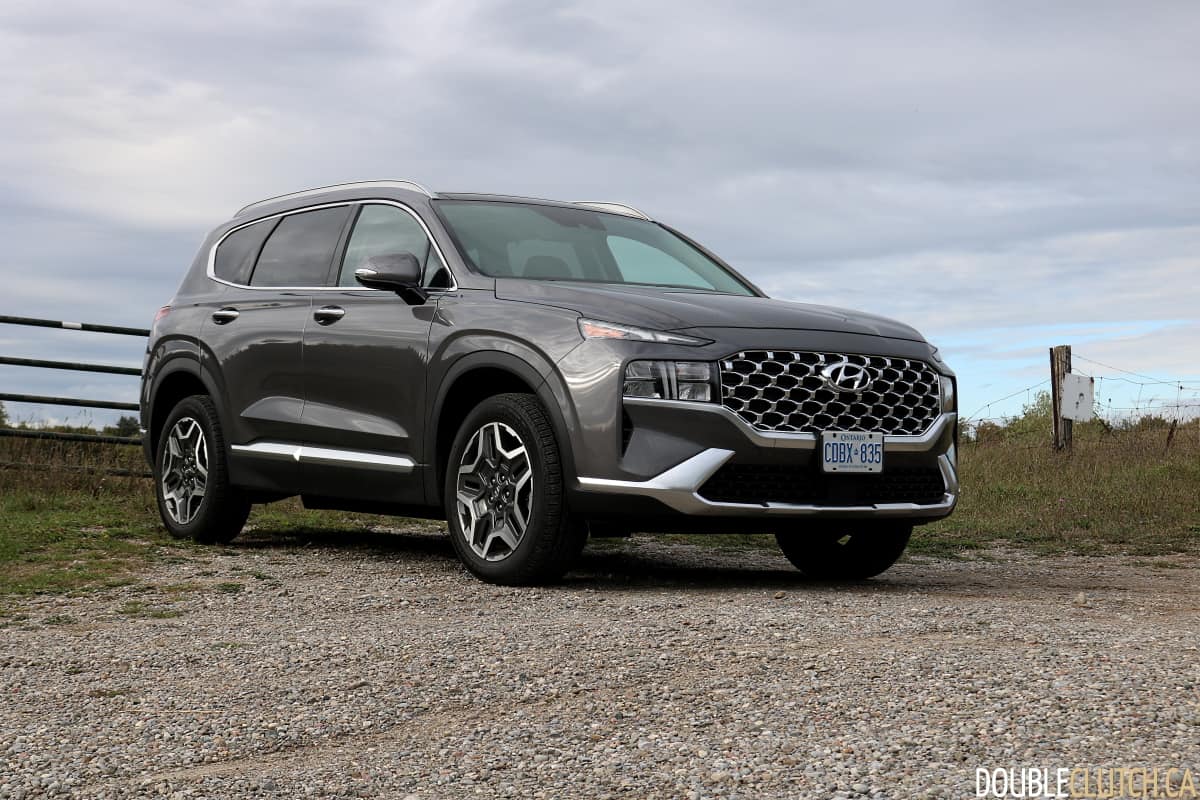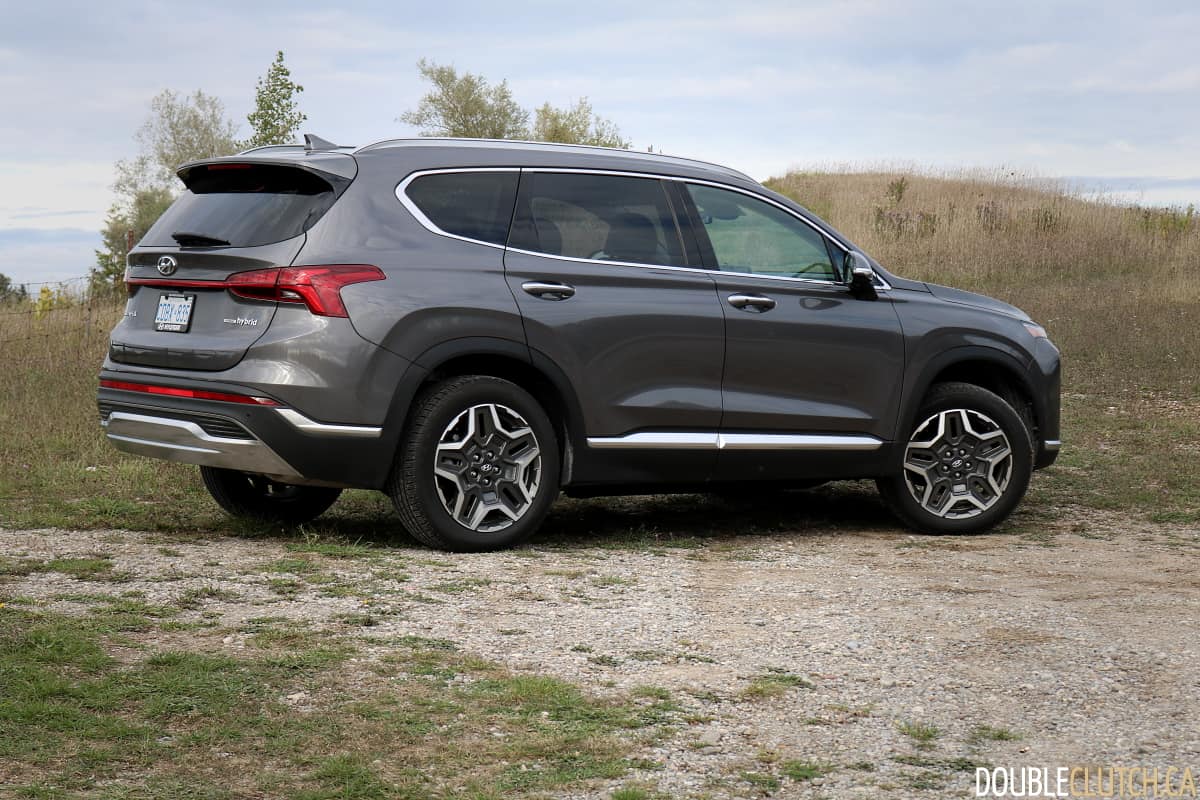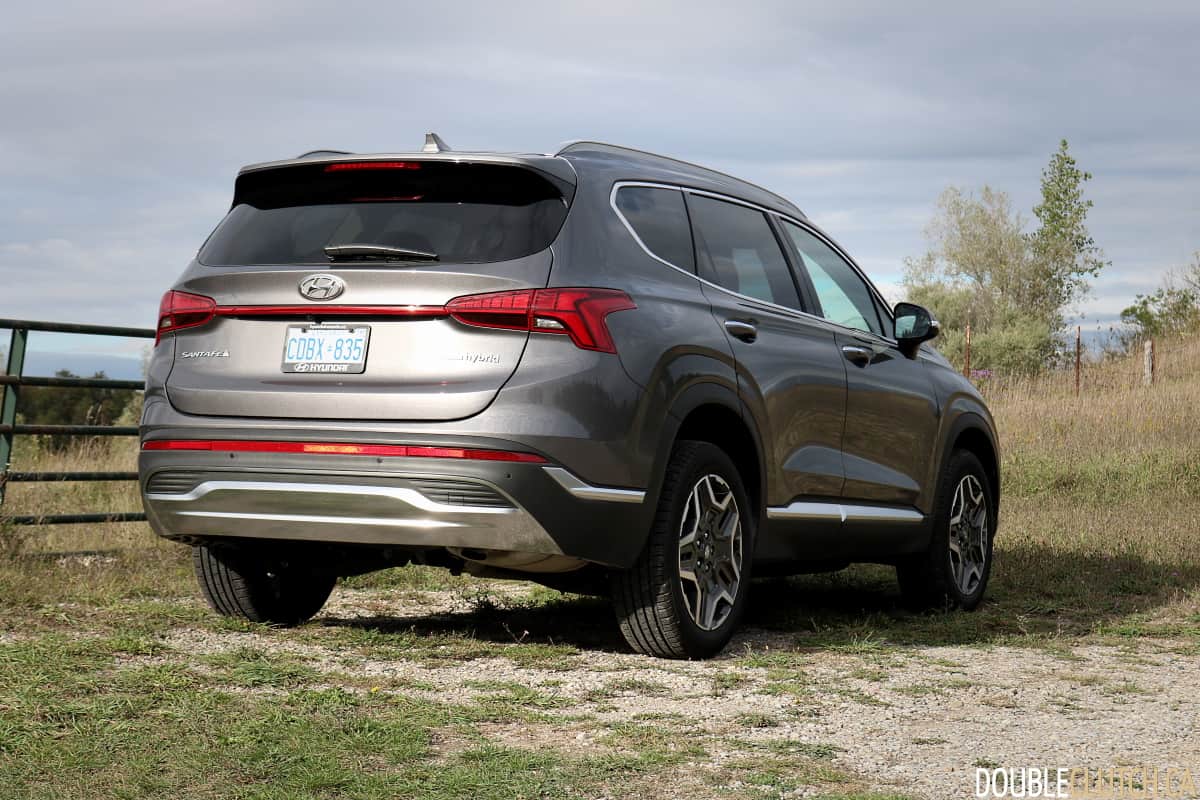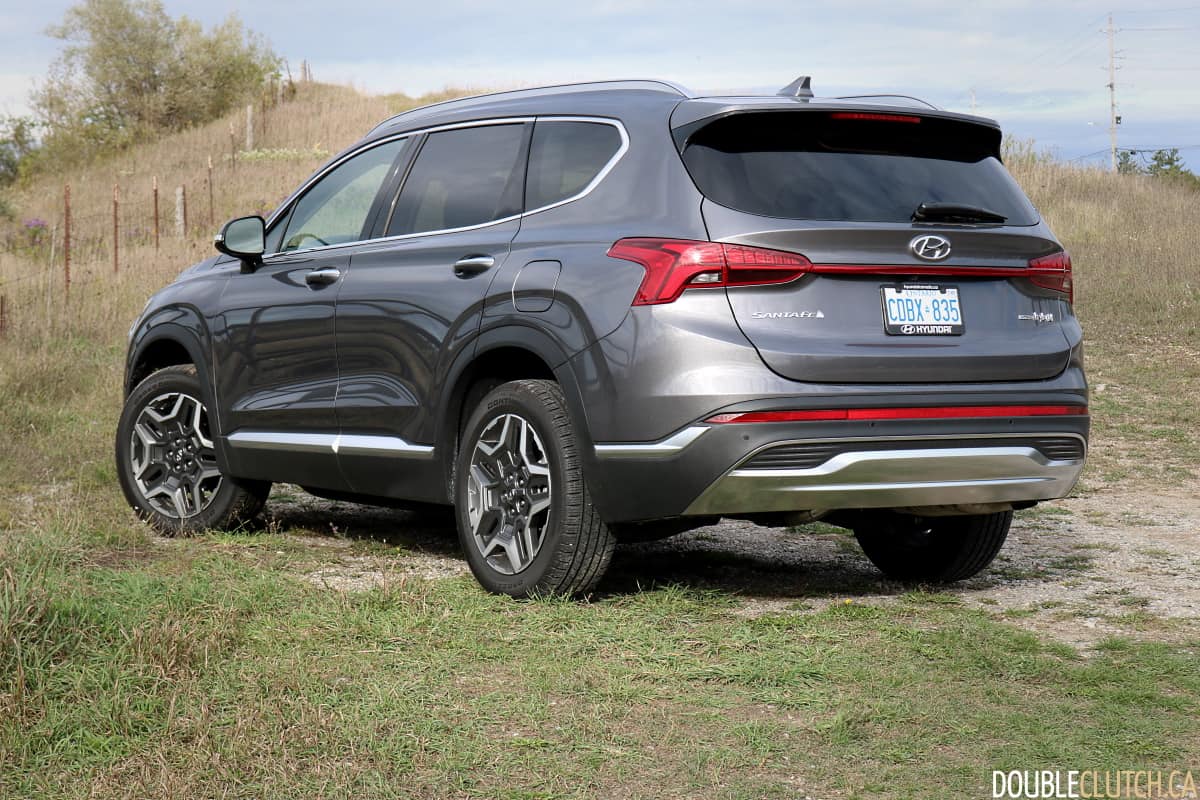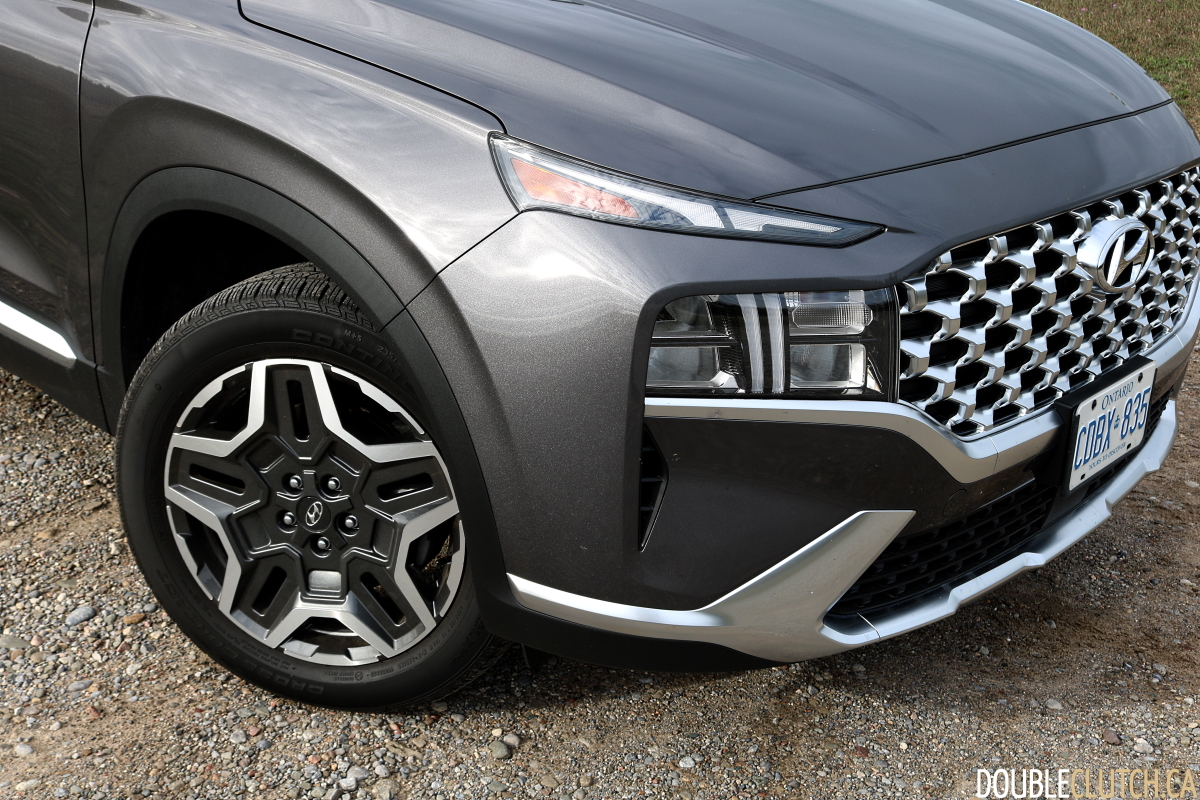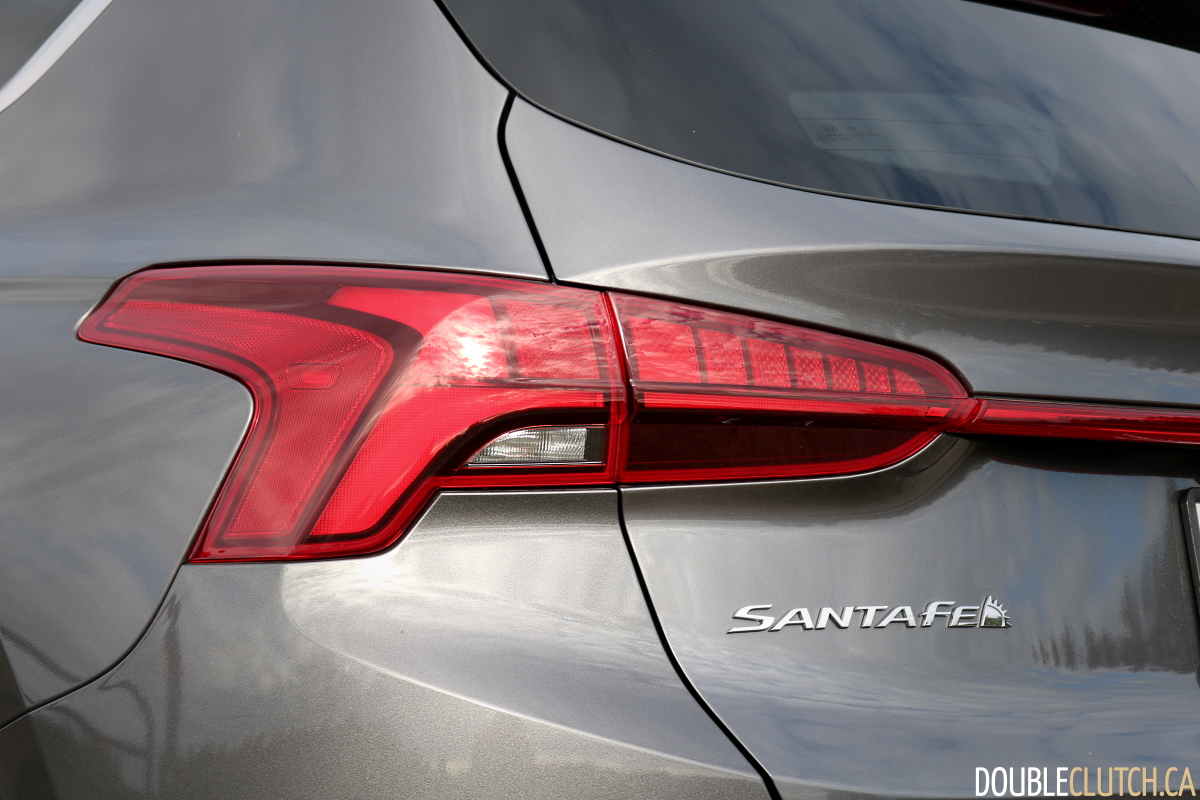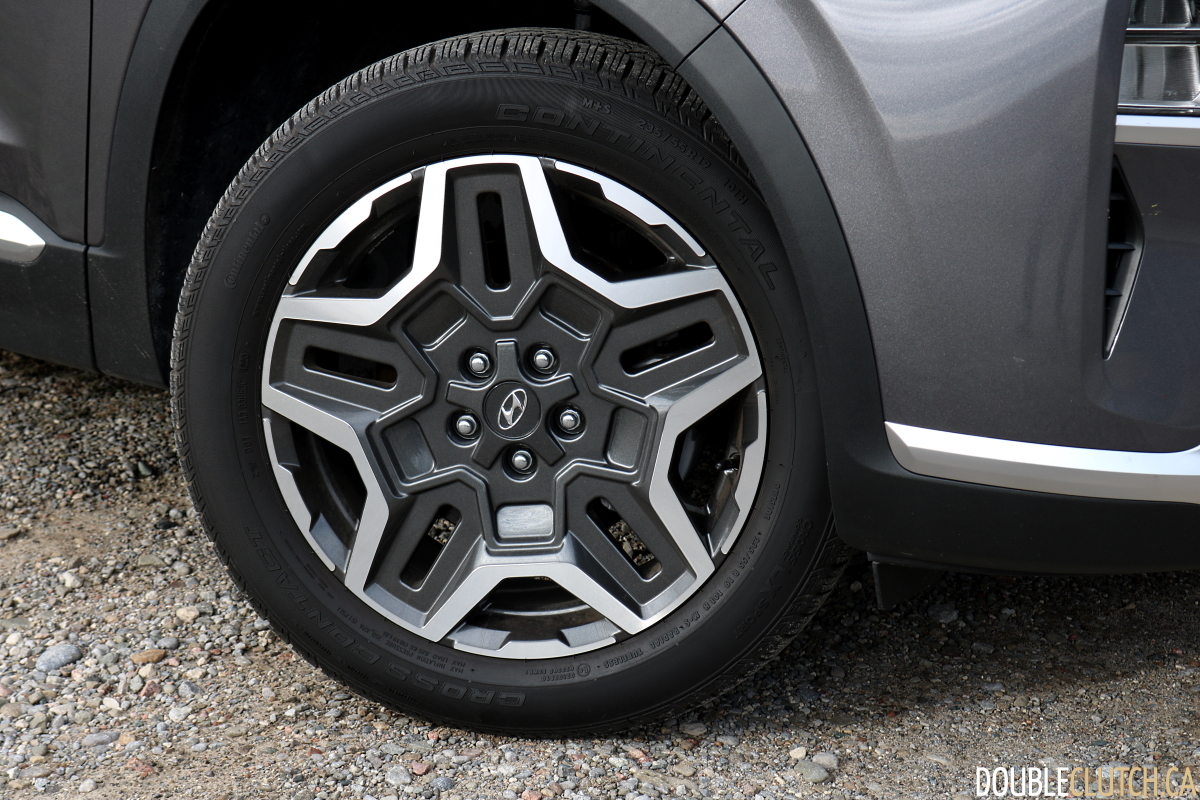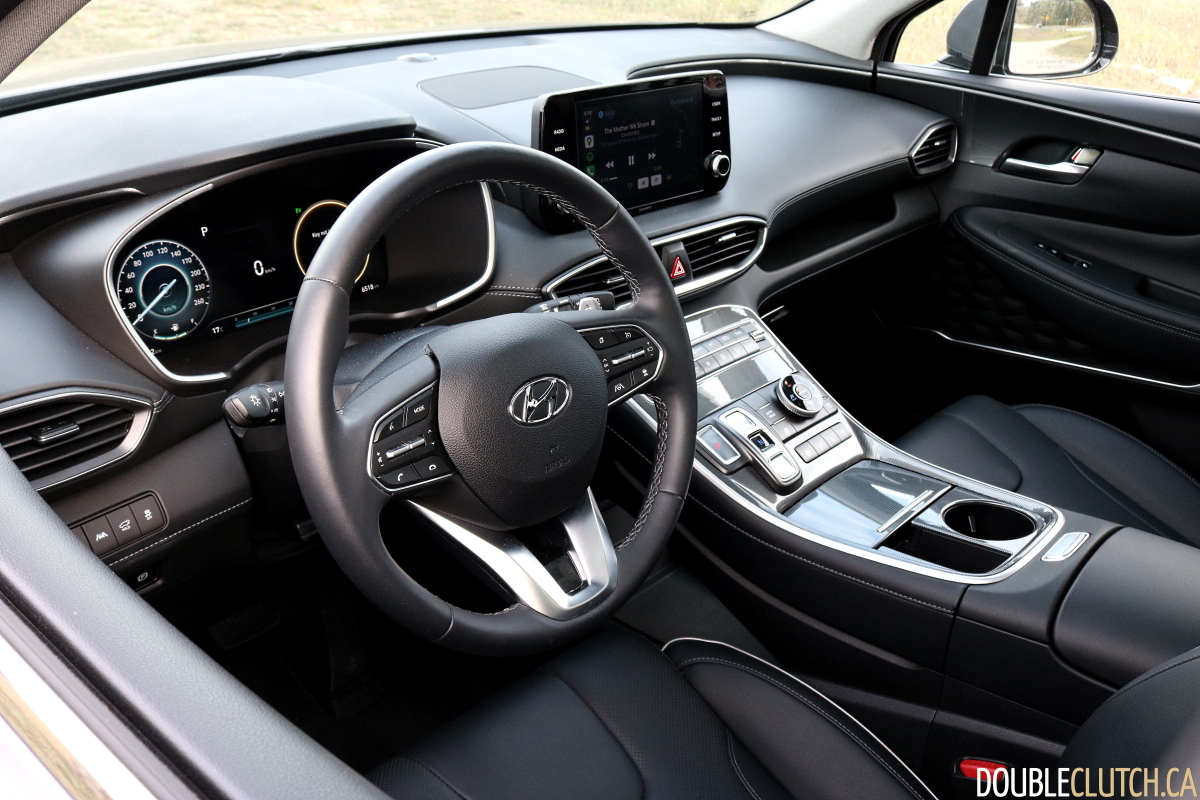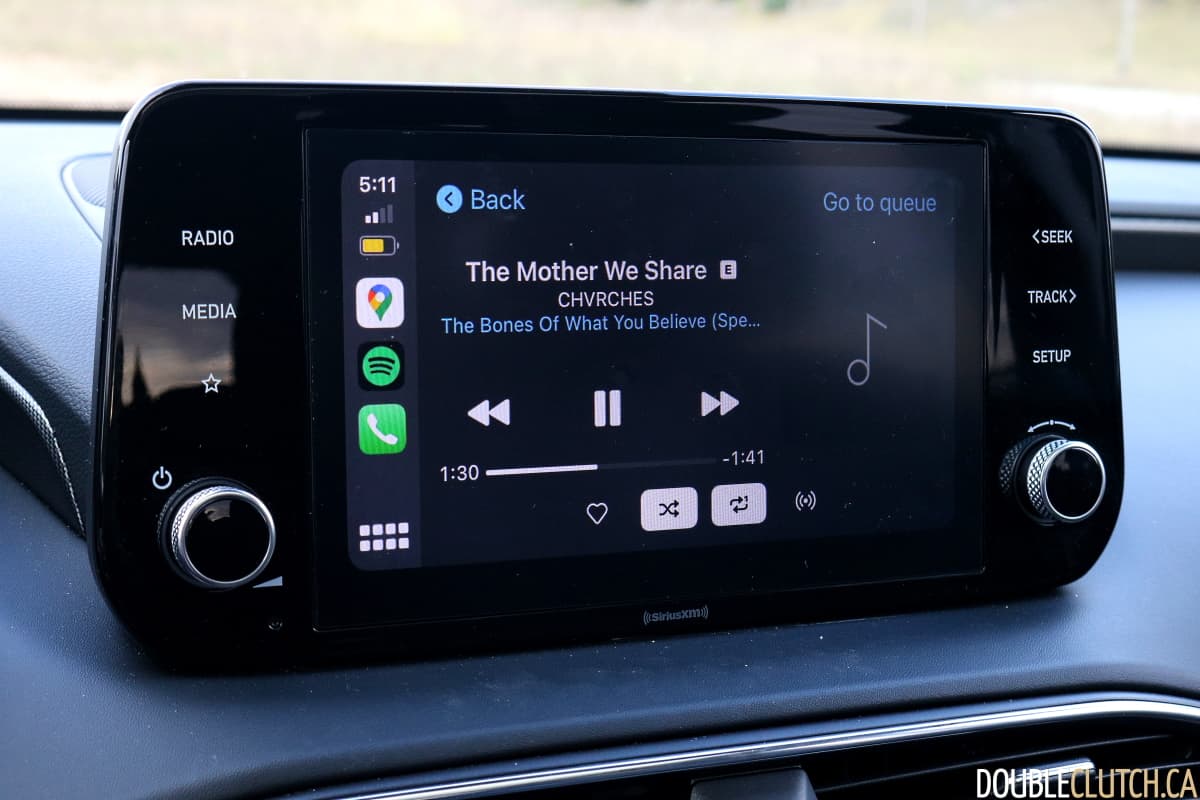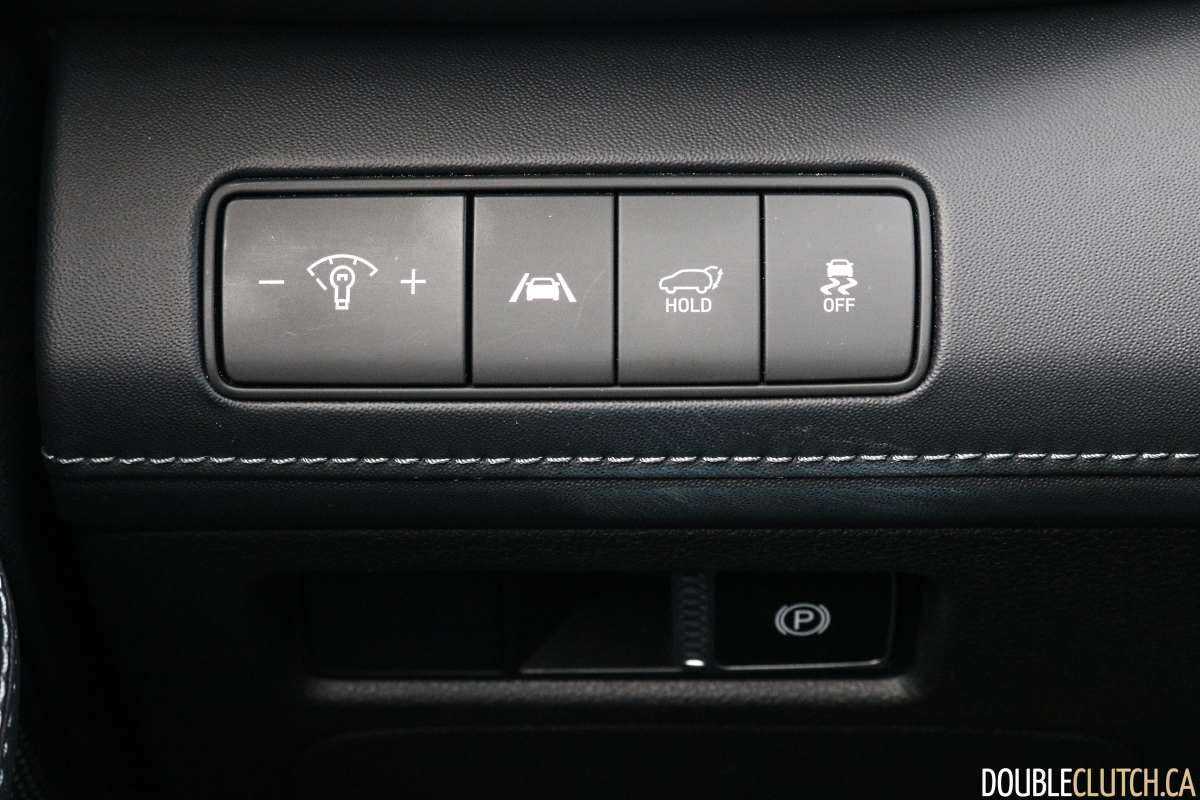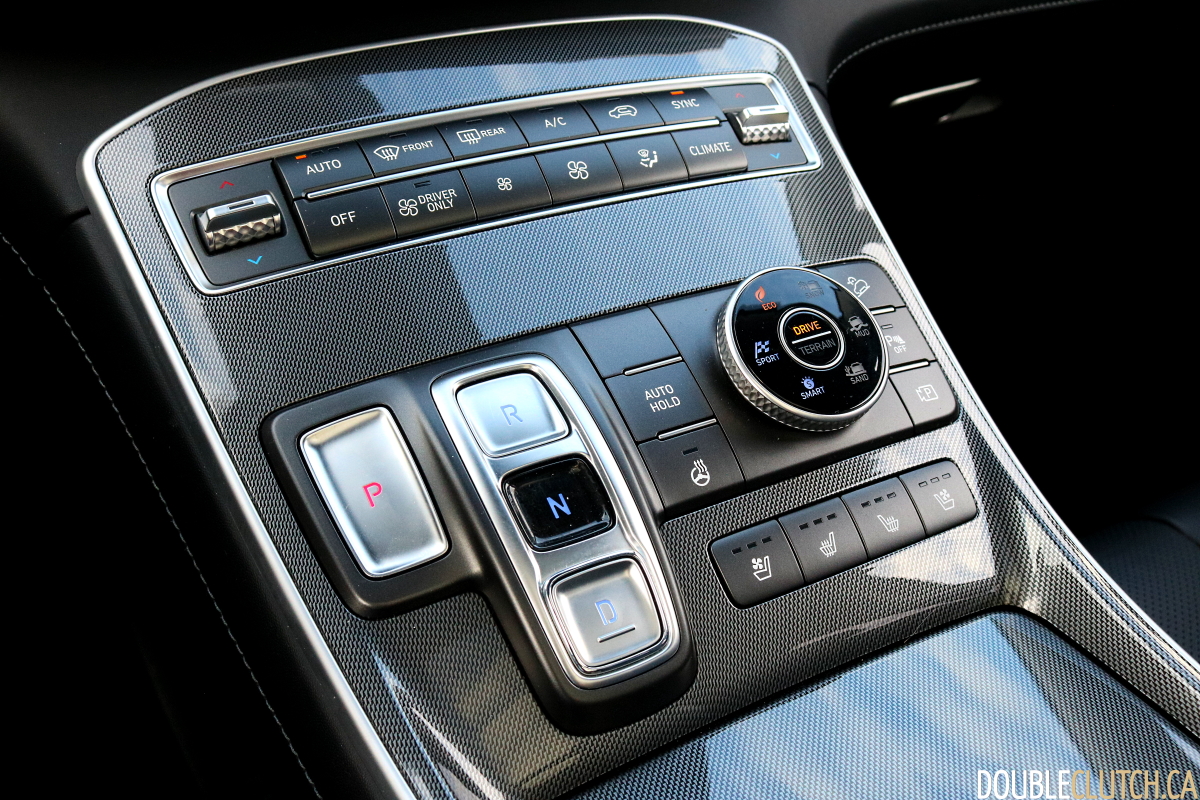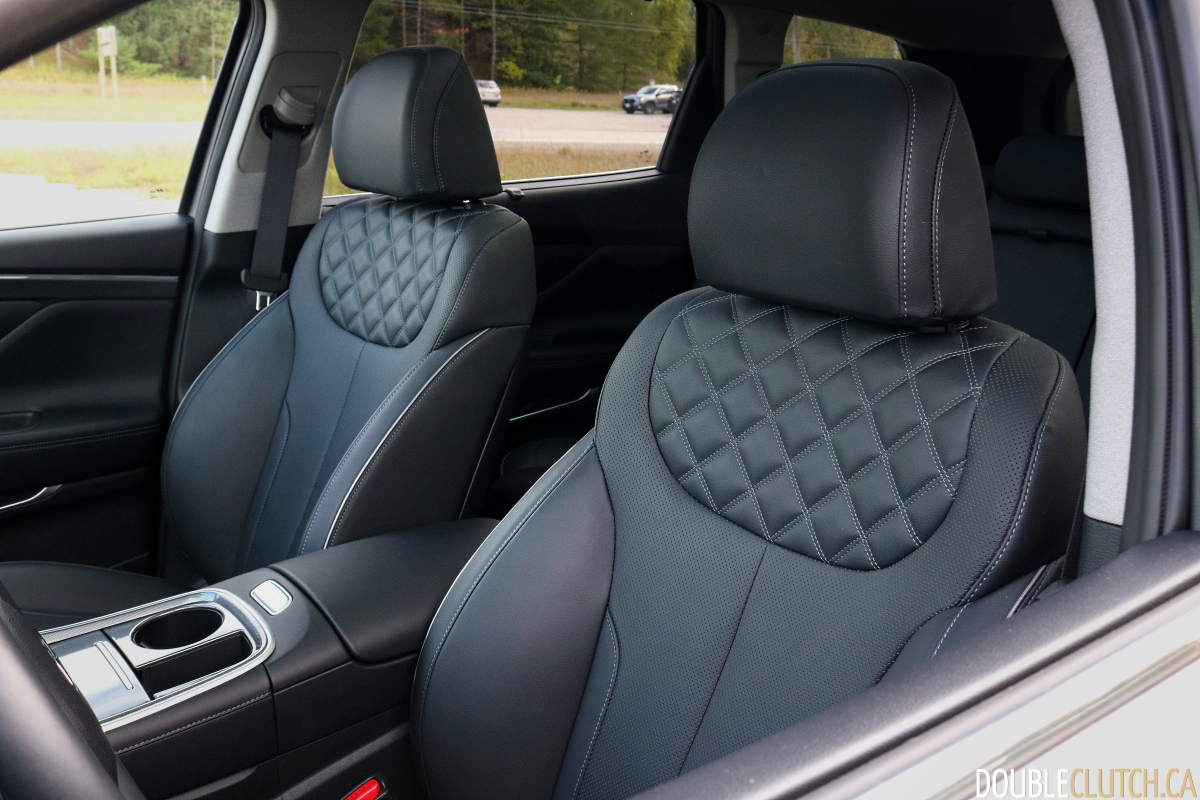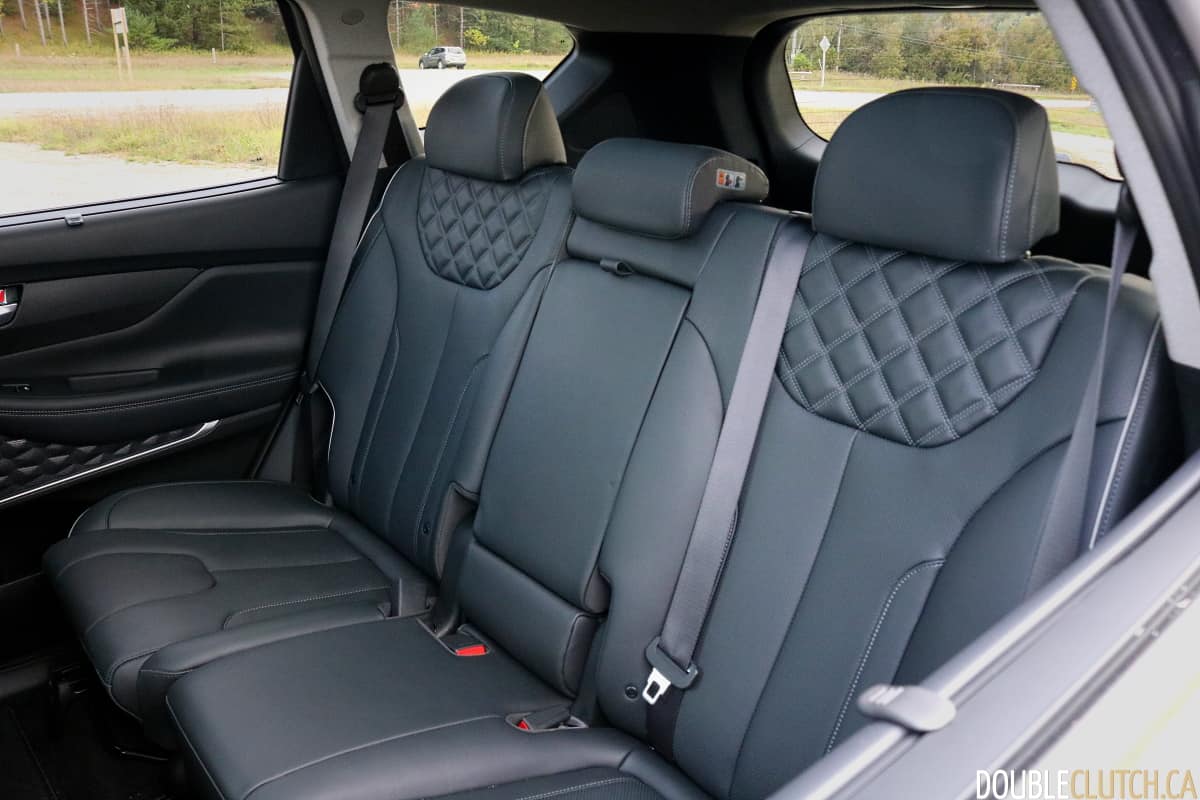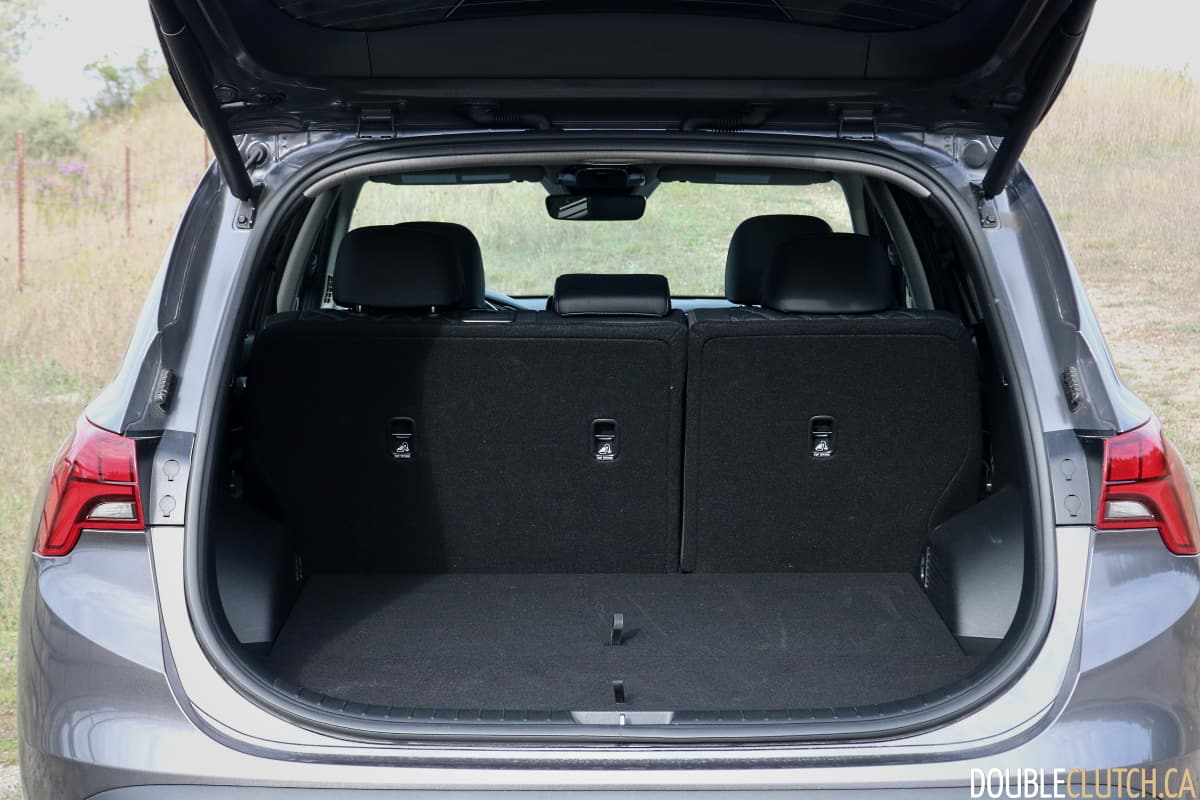There are a lot of things crossover SUVs do well. They’re capacious, practical, typically ride comfortably and have nice flat roofs that allow for gargantuan sunroofs. However, there are also a lot of things they don’t do well. They don’t typically handle well, they’re rather pricey and they often get rather poor fuel mileage. Imagine my astonishment when the 2022 Hyundai Santa Fe Luxury Hybrid turned out to be an answer to all of the typical crossover SUV complaints.
First though, let’s take a step back and assess the traditional strengths of this two-row family crossover. One reason consumers love crossovers is for their styling and the Santa Fe received a nip-tuck for 2021 that really smartened up the design language. The front bumper now sports a wider, sleeker grille that blends expertly into the main elements of the two-piece headlamps. The linework on the lower bumper is also cleaner with no clashing angles. Out back, the tail lamps adopt a full-width treatment with each end finishing in a pronounced v-shape. The rear bumper also got cleaned up with simpler linework, less tacky plastic cladding and a full-width reflector. These updates transform the Santa Fe from inoffensive to downright handsome, a true testament to the power of a facelift.
When I brought the Santa Fe Hybrid over to managing editor Ben’s place, he remarked that there’s little point in the Santa Fe when the Tucson is really the same size. In terms of practicality, he’s right. The Santa Fe doesn’t have a ton more cargo space or passenger space than the Tucson, although what gains it has are quite well-optimized. However, looking at it purely from a practicality standpoint somewhat misses the point.
While the Tucson has the interior of a high-velocity galactic escape craft, the Santa Fe is more familiar, more comforting, more traditional. Instead of gratuitous touchpad technology, almost everything has its own button, switch or knob and there’s something pleasing about that. Moreover, the grain on the soft-touch plastics seems just that little bit tighter, the seats just that little bit softer and the steering wheel just that little bit more ergonomic. Instead of being a car for futurists, it’s a car for people who confide in the present.
In terms of tech, the most-wanted features for 2021 are all present and accounted for. My tester is the Luxury Hybrid trim which includes heated and cooled leather front seats, wireless phone charging, dual-zone climate control, a fully digital instrument cluster, an enormous panoramic sunroof and an eight-inch touchscreen infotainment system with wireless Apple CarPlay and Android Auto. While the ability to go fully wireless is nice, I experienced some questionable connection reliability on Apple CarPlay. As for the aforementioned digital instrument cluster, it’s a crisp 12.3-inch LCD unit offering brilliant display quality but poor customization.
It would be nice to be able to see a map or the current song playing in the gauges, yet Hyundai won’t let you do that. The lack of the latter feature is particularly annoying considering that when the song or radio station is changed, the new track or station is displayed briefly in the cluster. Also unfortunate is the fact that a premium audio system simply isn’t offered on any hybrid model. Come on Hyundai, we’ll pay a bit extra if you chuck in the surprisingly good Harman/Kardon system from the repulsively-named Ultimate Calligraphy trim.
Powering the Santa Fe Hybrid is a 1.6-litre turbocharged inline-four mated to a traditional six-speed automatic gearbox. It’s combined with a 1.49 kWh lithium ion polymer battery and a 44.2 kW permanent magnet synchronous electric motor for a total output of 226 horsepower and 258 lb.-ft. of torque. The result of this minute engine mated to a hybrid system is that I averaged an impressive 6.2 L/100km in mixed driving, blowing the government’s combined estimate of 7.4 L/100km to smithereens. For greater context, most comparably-sized crossover clock in at around 10 L/100km in mixed driving so the savings here are immense.
So, it’s efficient, but is the Santa Fe Hybrid quick? Although it keeps up with traffic perfectly fine, the answer here is no. A Honda Passport or Chevrolet Blazer with the V6 will absolutely smoke the Santa Fe Hybrid in a straight line. Then again, a brake-torque launch in a mid-sized crossover with three children in the back sounds like a way of summoning a tsunami of vomit so it’s best not attempted at all. Instead, just sit back and enjoy the ride.
Smoothness is what you really want in a mid-sized crossover and the Santa Fe Hybrid delivers. Double-pane front windows and door-mounted mirrors keep wind noise very subdued, good spring and damper tuning prevents potholes from feeling like sinkholes, the gasoline engine kicks on and off imperceptibly and the panoramic sunroof doesn’t seem to create any undesired sound reflection. If there’s one sore spot, it’s the fair amount of tire roar from the standard Continentals. Granted, that tire noise will likely put baby to sleep in short order, so it’s not entirely a bad thing for everyone.
On the handling side of the ride and handling equation, the Santa Fe Hybrid proves quite adept. Pressing into an on-ramp reveals sufficient levels of grip along with a confident surefootedness that’s absent from some competitors. The steering is light enough for easy u-turns, fast enough for quick manoeuvers and accurate enough for fidget-free freeway travel. While the Santa Fe Hybrid doesn’t offer the confidence and agility of a sedan, it’s not so far removed as to be cumbersome.
On a more family-minded note, all the requisite active safety nannies are well and present on the Santa Fe Hybrid. While the forward collision warning occasionally picked up false positives, blind-spot monitoring, lane keeping assist, adaptive cruise control and ultrasonic rear passenger detection all worked beautifully.
My Santa Fe Luxury Hybrid test car clocked in at $43,899 which is quite fair given equipment levels. Those looking to save a few dollars can opt for the hybrid powertrain in the Preferred trim for $41,629 but the extra $2,270 for the higher trim is well worth it for the extra kit. In terms of competition, the Toyota Venza is noticeably less practical but has a lower starting price of $38,490. However, a mid-range Venza XLE clocks in at $44,745 which is $846 more than a comparably-equipped Santa Fe Hybrid.
The Kia Sorento Hybrid isn’t here yet, but when it arrives it’ll be very competitive against the Santa Fe and likely offer the perk of three rows. A true wildcard option is the Volkswagen ID.4 which offers similar interior space, more kit and prices out comparably once incentives are factored in. Of course, it’s also fully electric which may not be your cup of tea.
In the midsize crossover segment, the 2022 Hyundai Santa Fe Luxury Hybrid is blazing a trail on its own, one of efficiency and sensibility and reasonable grace. It conducts its business in a hushed, middle-class manner, quietly brimming with confidence and value. If you’re looking at a mid-size crossover, go out and drive the Santa Fe Hybrid. Your wallet will thank you.

